What is a Digital Business Card
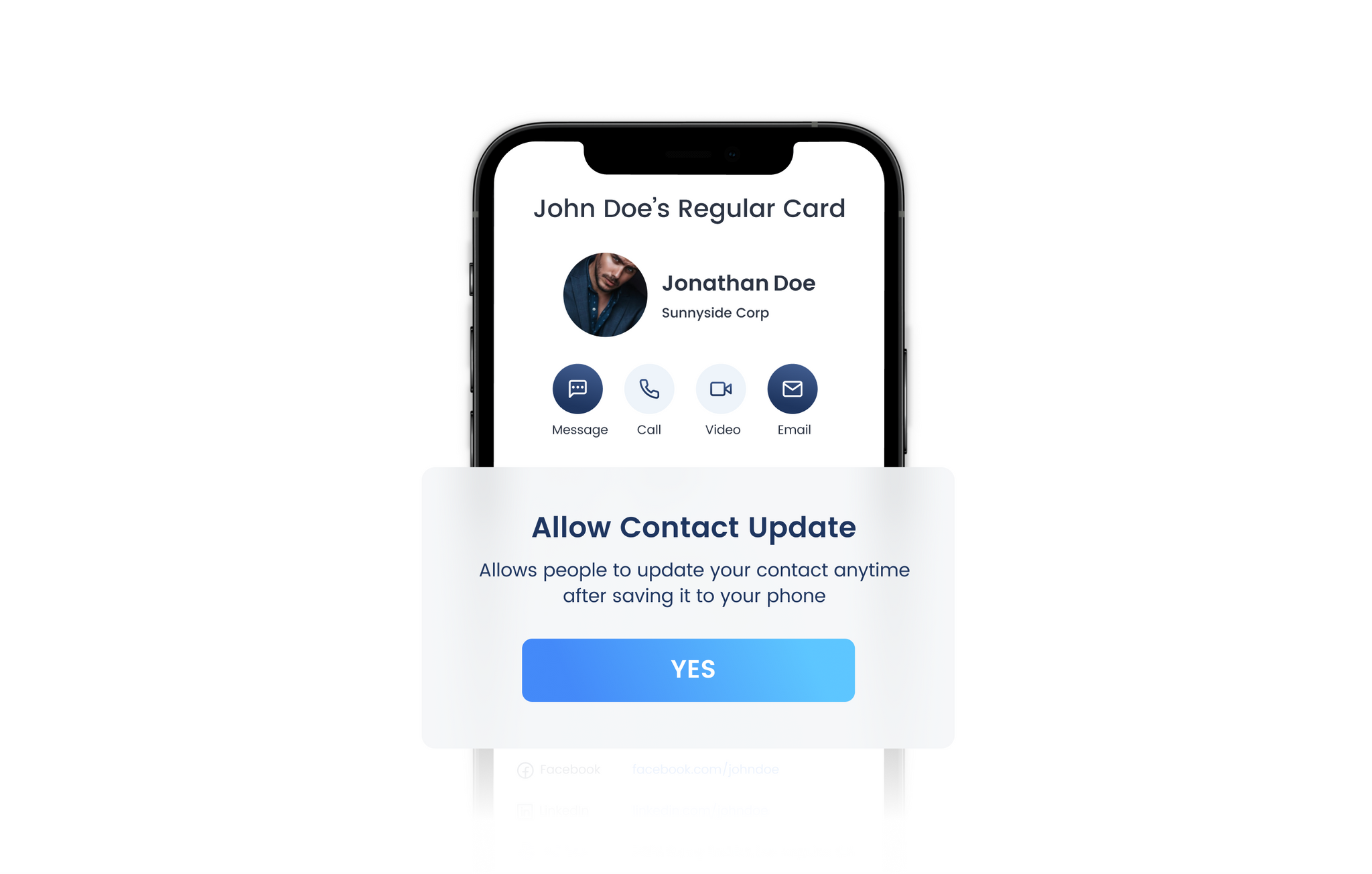
A digital business card (DBC) is a web-based collection of contact details and profile information that can be easily shared online or through physical devices. In addition to their contact details, users can include social media links, websites, profile photos, bios, among other features. The DBC format is versatile and portable, allowing it to be used in a variety of ways.
The purpose of a DBC is to share more information than what's possible with traditional paper business cards in a more convenient and dynamic way.
With a rapid market adoption, the DBC is becoming a de facto standard for contact sharing among individuals, professionals, and business owners.
What are the advantages of a digital business card?
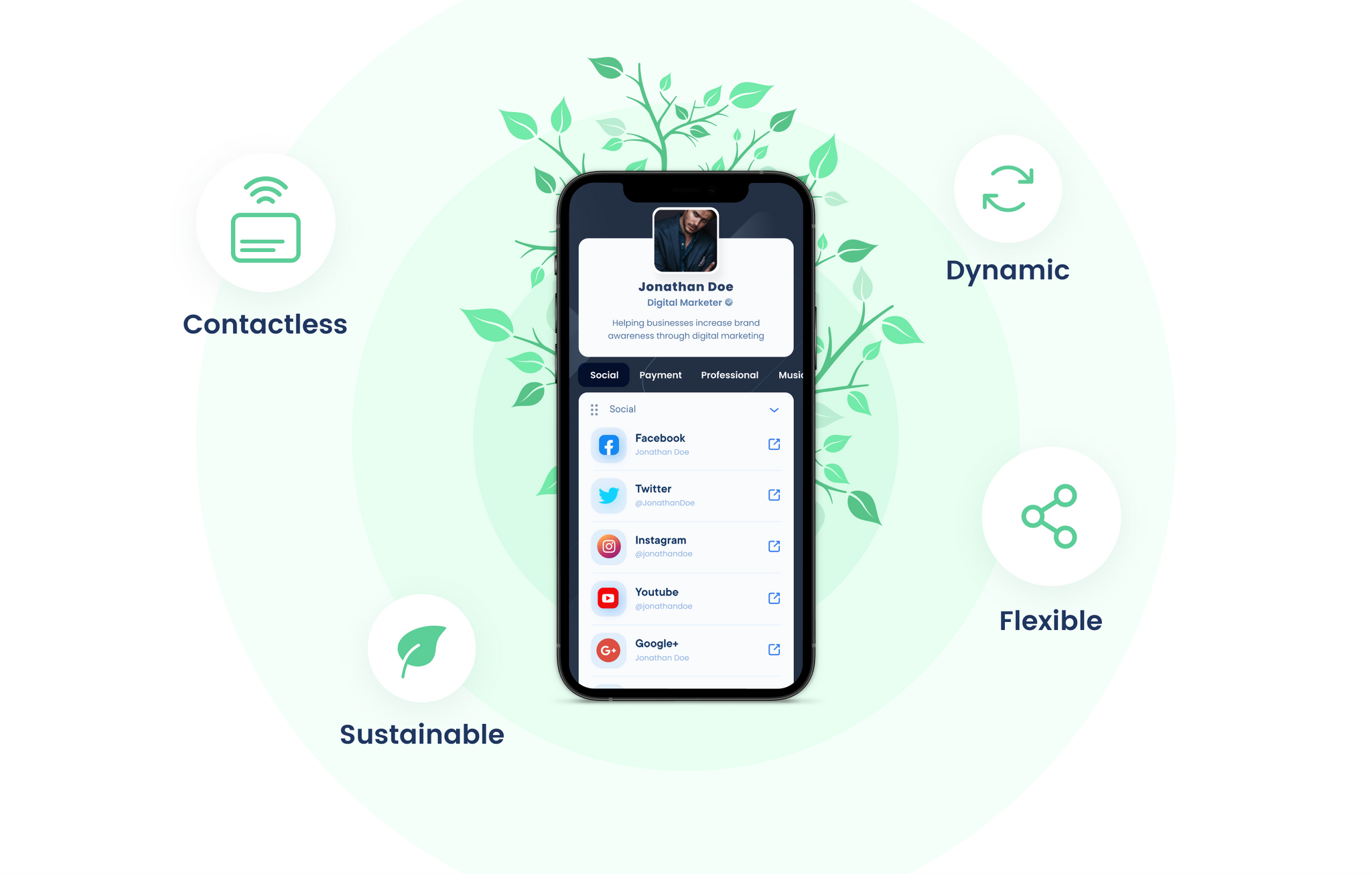
Although DBC’s serve the same basic purpose as paper business cards (PBC), they have distinct advantages that make them more suitable to the way people do business in the modern world. Here are some of the attributes that make them so popular; DBC’s are:
- Flexible – DBC’s can be shared across platforms and are suitable for both personal and business networking, integrating social media, analytics, and other tools. Users can create multiple card profiles for different purposes—only sharing the information they want—and profiles can be customized according to reflect the brand or personal style of the user.
- Dynamic – When user information changes, their digital file and any profiles will instantly reflect those changes, so the new information is quickly updated in their network. This means not having to waste existing paper cards or re-order a new set.
- Sustainable – PBC’s are wasted by the millions every year, consuming both resources and energy. DBC’s are simply files, so they only require the digital infrastructure all around us in order to exist, consuming a tiny fraction of the energy of their paper-based cousins. Cardholders can create as many DBC’s as needed without the manufacture of physical products.
- Contactless – DBC’s can be used to transfer information over a variety of digital channels without the need for close physical contact or the exchange of paper business cards.
Although anyone can use a digital business card, the word business is in the name for a reason. DBC’s grew from the long tradition of paper business cards, and are finding new and exciting uses in the professional world.
How do digital business cards work?
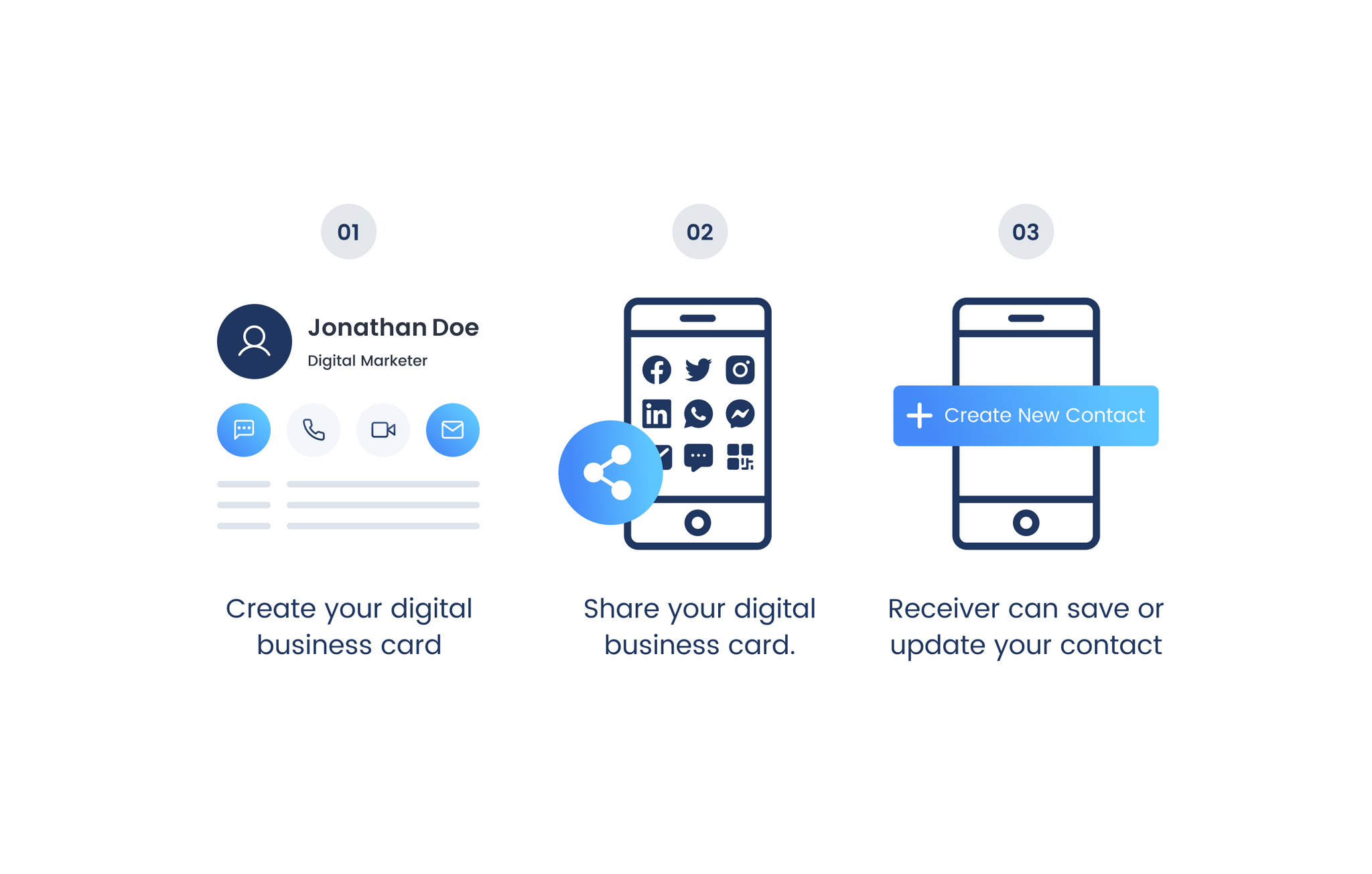
A DBC is based on a data file with a number of fields that identify personal and business contact information—like the cardholder’s name, email address, phone number(s), physical address, company name, title, websites, social media URL’s, photos, and more.
When a DBC file is shared directly, it can be transmitted through:
- Multimedia Messaging Service (MMS) text message
- Social media instant message (IM)
- File transfer services like Apple Airdrop
Alternatively, a link to a website containing the DBC file can be sent to electronic devices using near-field communication (NFC) or dynamic quick-response (QR) code technology.
When recipients receive a DBC file, whether directly or after downloading from the transmitted URL, they have the option to add the data to their contacts or update their existing contact for the sender. They can then access the contact data directly on their device or visit a profile page, if any, hosting the cardholder’s information.
What information can a digital business card include?
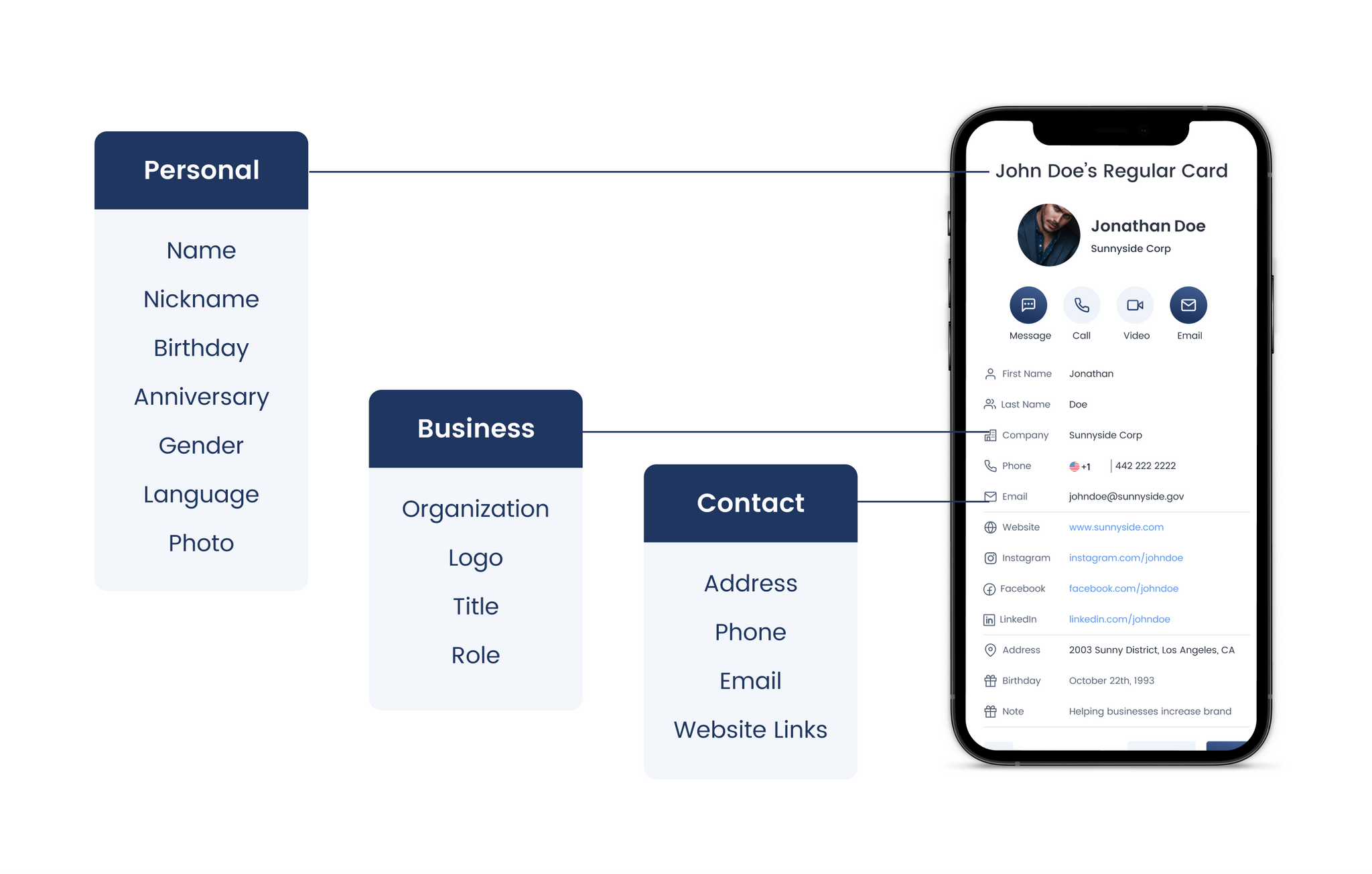
The currently accepted file format for DBC data interchange is the vCard file (.vcf or .vcard extension). A vCard file has some variations but generally contains a number of optional properties, or data fields, including commonly used contact and identifying information.
DBC’s often make use of a profile mini-page containing the cardholder’s information in a customized layout. In addition to contact information like name, phone number, and email address, this mini-page can include a profile photo, external and social media links, a map showing the shared address location, in addition to other supplemental data like business reviews.
The growing use of DBC’s among both private and business users is due to several unique benefits.
How are professionals and businesses using digital business cards in 2022?
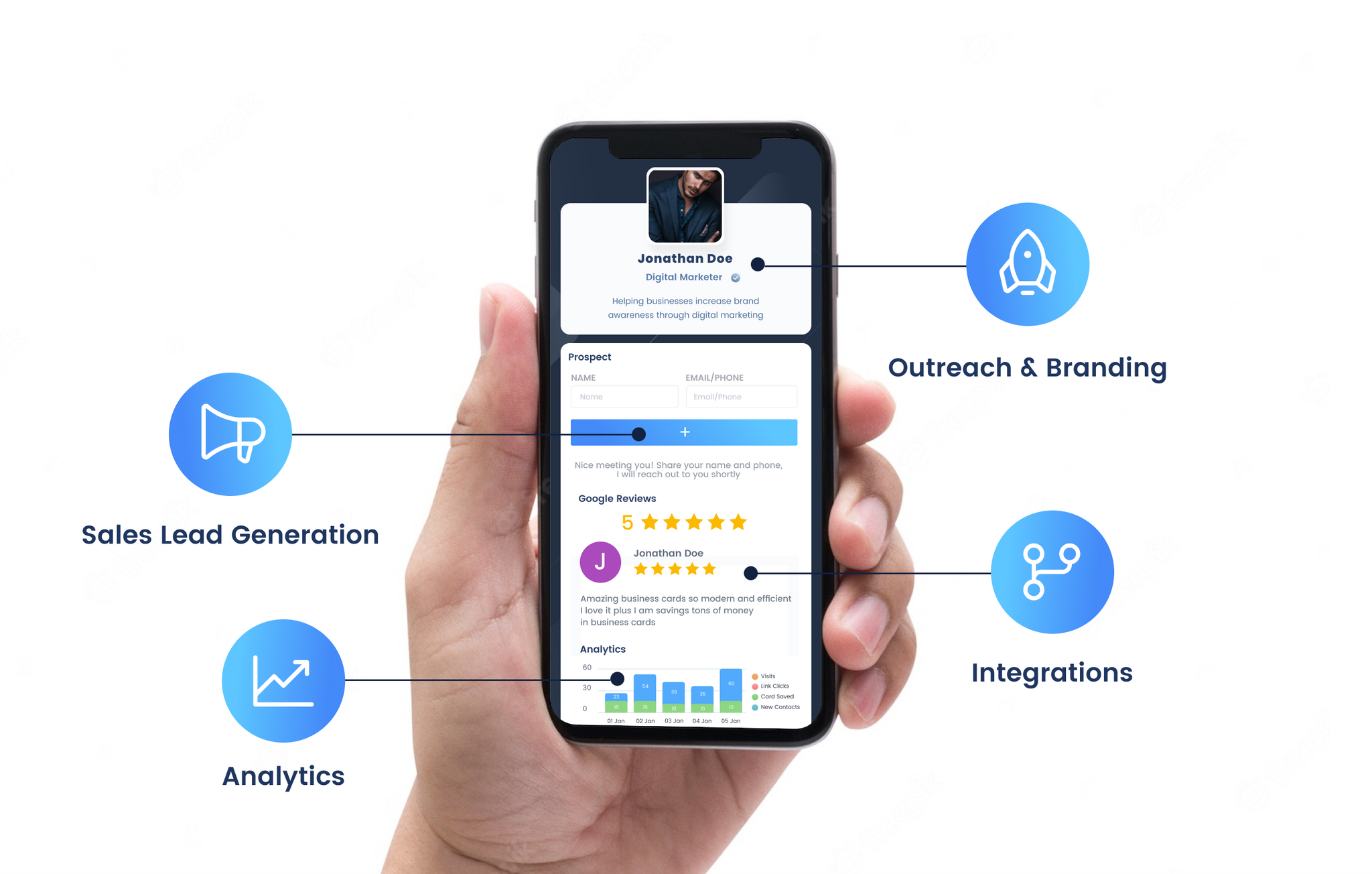
Networking and communication has a very specific purpose for business professionals—to help them reach their audience. DBC’s build on the old use cases of business cards as introductory means by taking advantage of new media, data, and analysis tools.
Here are some of the ways that DBC’s are being used in the business world today:
- Outreach and branding – DBC’s work seamlessly with social media, email, and other platforms that help support a brand through broad outreach. Professionals can distribute their details or profile virtually without limit, whether in person or across the internet.
- Sales lead generation – DBC’s often serve as a “first-touch” in a marketing campaign, and profile tools can then lead to further customer engagement. Leads can not only begin at the DBC, but also be tracked, helping assess the effectiveness of networking efforts.
- Integrations – Popular business tools, like customer relationship management (CRM) software and intelligent data analytics, can be easily integrated into a DBC profile. This makes for a powerful combination of networking and analysis that can quickly help a business meet its goals.
- Analytics: -- DBC dashboards can be enhanced with powerful analytical tools providing cardholders with real-time insight into how audiences are engaging with their content. Data can help businesses grow by helping them measure the return on investment (ROI) of events and networking activities.

